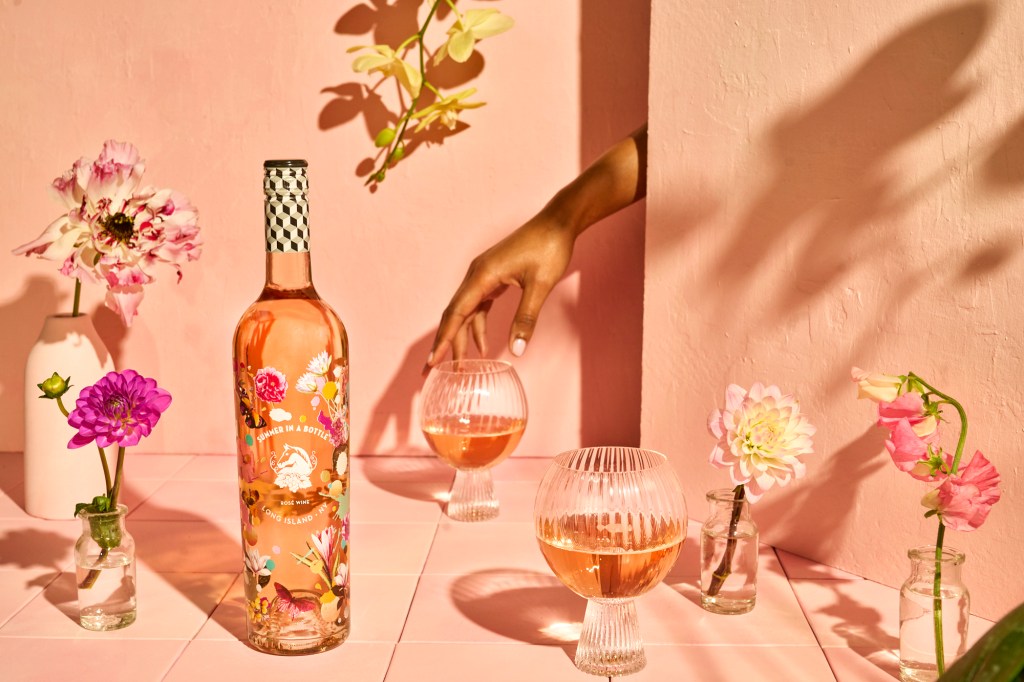Chris Kelly Brings Instinct & Intellect to Colm Rowan Fine Art
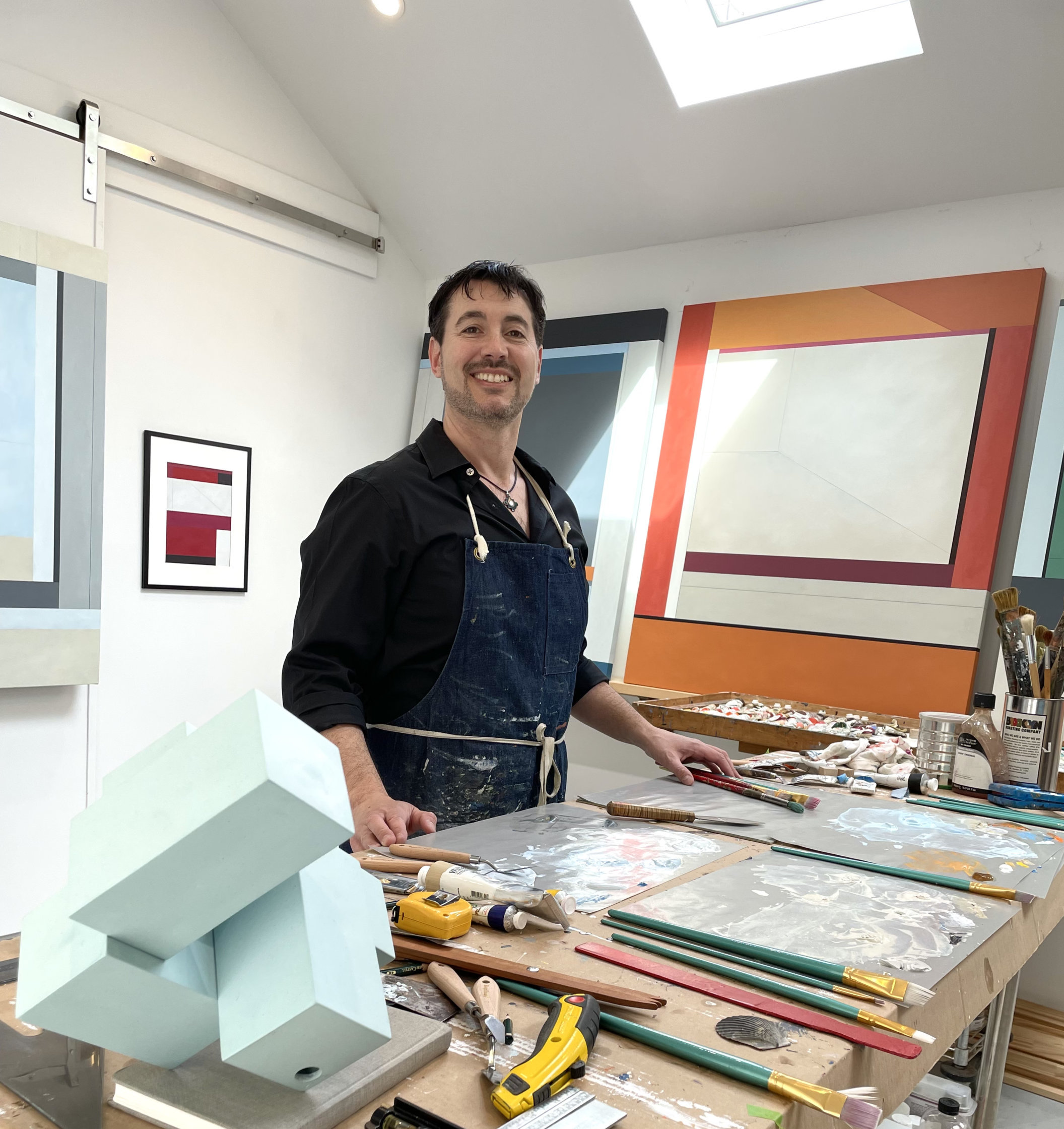
Following years living in Brooklyn and time away from his true passion, East Hampton artist Chris Kelly returned to the East End, picked up his brushes and began what has been the most productive and successful period of his painting career. The fruits of his labors, created over the last two years since Kelly returned to art full-time, will be on view in The Eye of the Storm, his second solo show at Colm Rowan Fine Art in East Hampton, opening this weekend and continuing through Sunday, June 19. An artist reception will take place at the gallery on Saturday, May 28 from 4–7 p.m.
Described by some as “hard-edge minimalism,” Kelly’s paintings and sculpture explore color and structure through geometric abstractions, which he says are inspired by “the hidden geometry of nature,” such as the golden mean — a mathematical ratio often found behind the natural world’s most aesthetically pleasing organic forms. He describes this divine proportion, the Fibonacci sequence and other logarithmic and academic considerations as being at the root of his pieces, but Kelly acknowledges that gut instinct and an artistic eye also play an important role.
No matter how the sausage gets made, the finished works present beautifully composed and visually compelling arrangements painted in oil with various graphite lines helping to break up or connect the shapes and colors within them. And they’re the reason Kelly has had an incredibly abundant two years, showing at numerous venues, including the Hamptons Fine Art Fair and Art Market Hamptons, the Mark Borghi gallery in Sag Harbor, amArtHouse gallery in Connecticut, Gallery RIVAA on Roosevelt Island and, of course, Colm Rowan Fine Art.
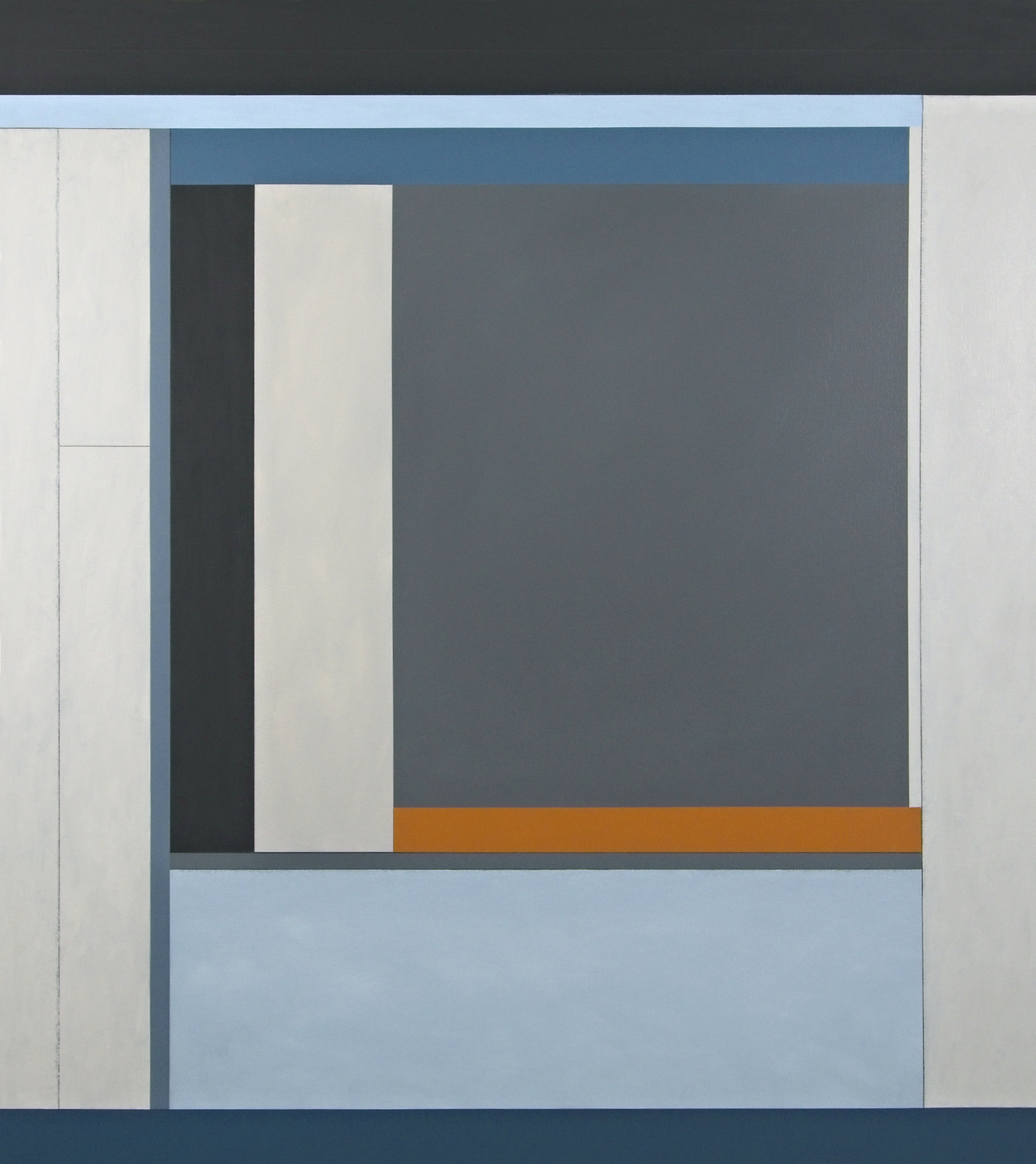
Though Kelly and his wife returned to the Hamptons, where he grew up, about five years ago, he says it took some time and effort before he was ready to refocus completely on his art.
CHRIS KELLY EXPLAINS HIS WORK & PROCESS
“I found New York City, living in Williamsburg (Brooklyn), to be very distracting. Way too many social obligations… I was always busy, but I needed a little peace and quiet,” Kelly says, noting that he flipped some real estate in the city and made art for an interior designer there, but he longed to reclaim his own artistic vision instead of painting murals or applying his talents to projects that brought other people’s ideas to life.
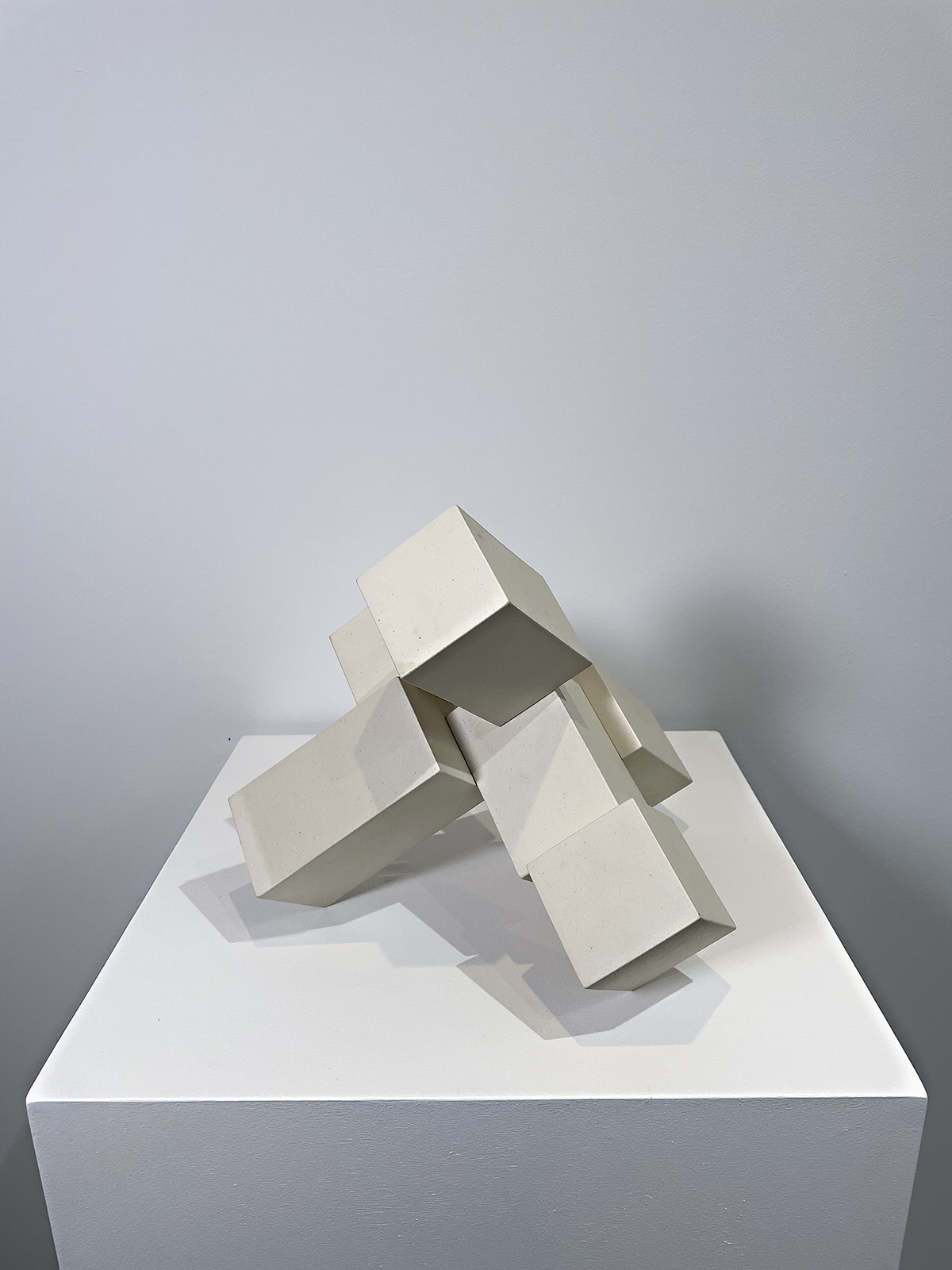
“We wanted to move back here and we wanted to buy a house, and I wanted to build a studio. And it took a while to get that going, to find the right property, and then the whole project took over two years just due to permit issues,” Kelly adds. “It was only about two years ago that I started full-time painting again.”
But he was nothing if not prepared, and once Kelly dove back into the art pool, he was doing the metaphorical butterfly stroke and winning races like a seasoned pro. “Right off the bat, things picked up really quick, which was great. I think I’m super lucky,” he recalls, noting that he began selling paintings right away. The sculptures followed and also became quite popular among galleries and collectors.
“No one’s ever done sculptures quite like this before,” Kelly says of the three-dimensional, geometric pieces made from painted aluminum or ceramic. “They wouldn’t exist without the paintings and they work hand in hand, but the sculptures to me are as special.”
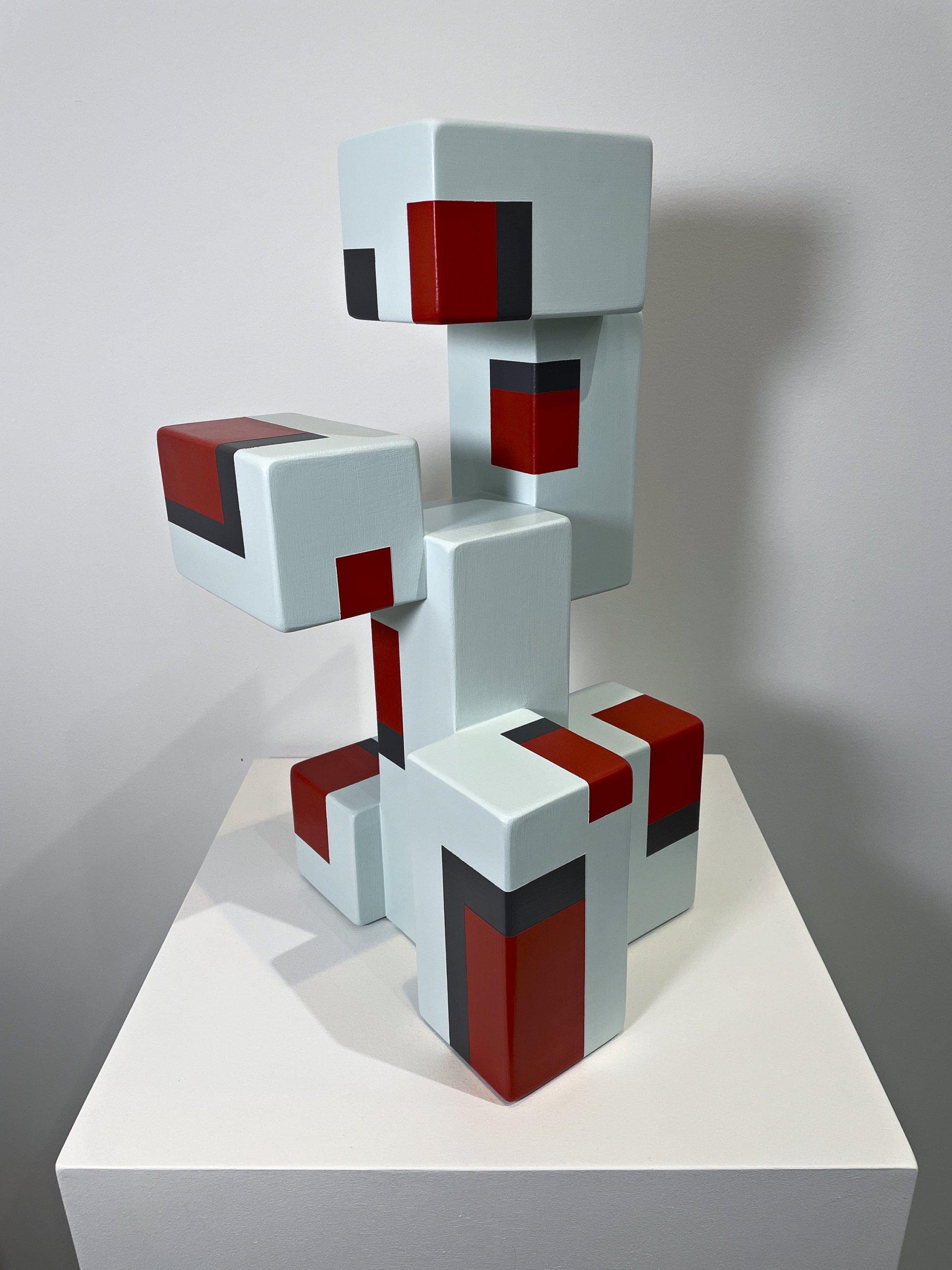
Despite fallow periods where he turned his attention elsewhere, Kelly’s style has remained consistent for the last decade. “It all starts with an initial calculus. Let’s say there’s a color that I want to use, or there are two colors that I’d like to use, and then the color theory that I’ve studied, I’ll keep that in the back of my mind when thinking about how to allow the paintings to progress. But a lot of it is also instinct,” Kelly says, explaining that he’s a classically trained artist, and he uses things like additive and subtractive color theory as a jumping off point, though the work rarely continues on a solely academic path.
“A lot of the interactions are based on the structures. The paintings have very strong structures, very solid structures, and I can’t just throw a whole bunch of colors at them — they won’t work. Because then the overall feeling falls apart. And if I make them too simple color-wise, then they lose the structure as well,” he says. “So I found this kind of happy medium between, let’s say, the right amount of color that works together on a canvas. Which was a shock to me. I didn’t think it would happen like that,” Kelly continues. “I didn’t think it would matter so much, that the colors would dictate structure and vice versa. I thought I would just be able to use whatever colors I wanted whenever I wanted, but when the paintings take on a life of their own, it doesn’t work,” he says.
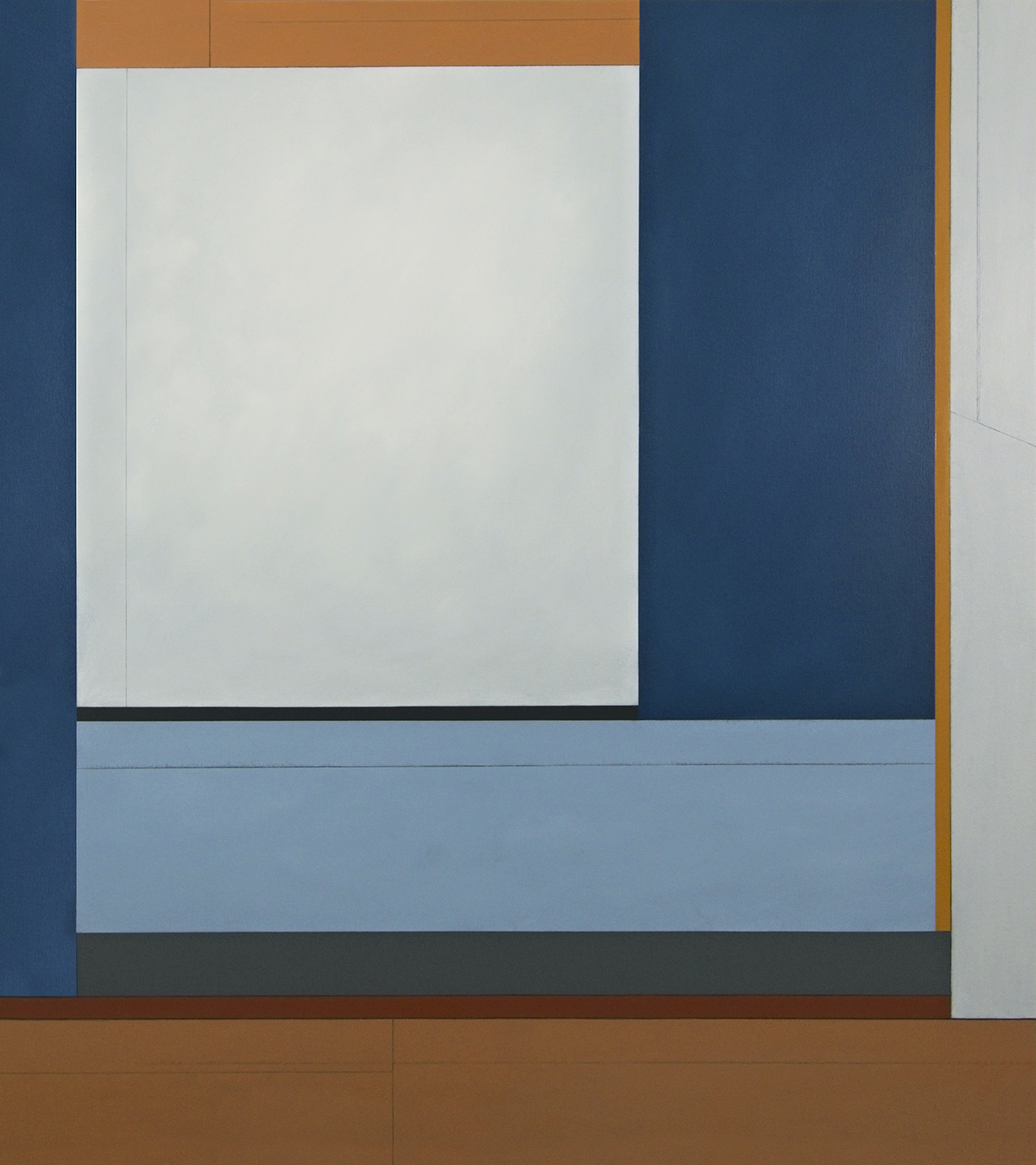
“For me it’s a yin and yang thing. It’s a combination of an intellectual thought process and an emotional intuition,” Kelly adds later. “It really comes down to, if something isn’t working, I don’t feel it in the brain, like I feel it in my chest, I feel it in my gut. Ok, the painting might be good, but it’s not really what it should be yet. That’s when I have to keep working at it, basically. And a lot of it is puzzle solving. Sometimes it might be one line of color that fixes or makes it the best painting it can be. Sometimes I have to start over.”
Kelly’s pencil lines are another integral element of his design, because even as instinct plays a part, he examines all aspects of the work.
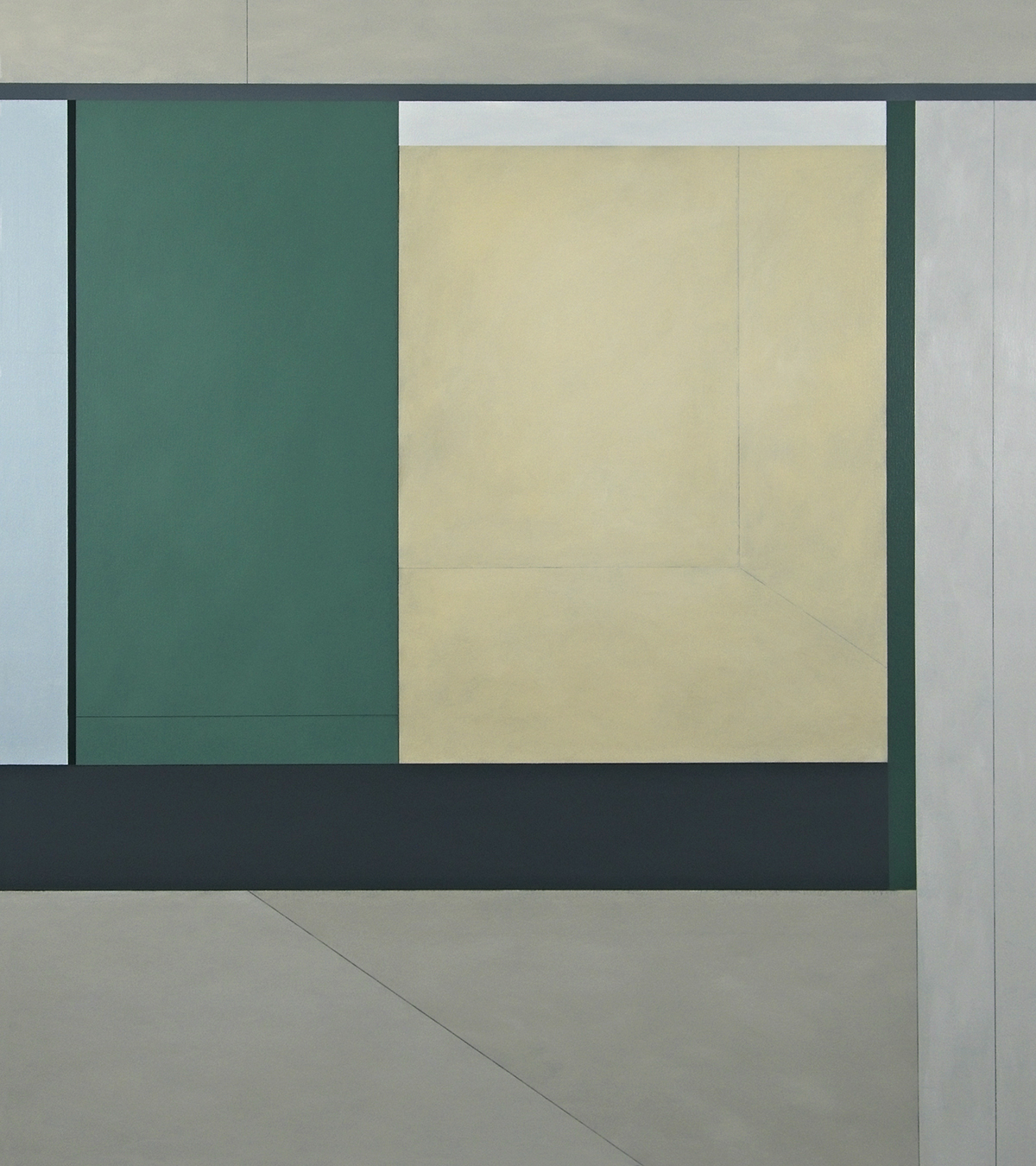
“It’s all for a reason. And that was also something that developed as I developed this style. The pencil lines, they sometimes help bring two blocks of color together and they sometimes help separate them, which was odd. … And not every pencil line is the same. They’ll be very thin. They can be thick. They can be a little jagged,” he says, pointing out later, “These (paintings) are straight lines and rectangles, but they have a very circular motion to them. When you look at them, your eye can go all around the canvas.”
Each of Kelly’s pieces on display at Colm Rowan will please the eye and animate the mind, much like the natural wonders that inspired them.
Visit colmrowan.com or check out chriskellystudio.com to learn more.

